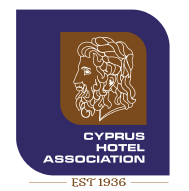About Cyprus
About Cyprus
Situated at the north-eastern end of the Mediterranean basin, Cyprus is the third-largest island in the region, covering an area of 9,251 square kilometres (3,572 square miles). The island’s rich history traces back to the 10th millennium BC with the earliest known human activity, and it was later settled by Mycenaean Greeks in two waves during the 2nd millennium BC.
Cyprus is an independent Republic since 1960 and governed under a presidential system. The population is approximately 900,000 inhabitants and the capital and largest city is Nicosia (established during the Bronze Age and serving as the inland capital since the 10th century).
Cyprus enjoys a classic Mediterranean climate, characterised by long, dry summers from mid-May to mid-October and mild winters from December to February. These seasons are separated by brief but pleasant spring and autumn transitions.
The Republic of Cyprus joined the European Union as a full member on 1st May 2004, marking the culmination of over three decades of diplomatic and institutional development.
Did You Know?
- Cyprus is the third largest and third most populous island in the Mediterranean? Its population as of January 2023 is 920.701citizens.
- The world’s oldest wine label belongs to Cyprus? ‘Commandaria’ is recognised as the world’s oldest named wine dating back 5000 years.
- Out of the total 1950 species of flowering plants worldwide, 140 are located in Cyprus?
- The Cyprus Moufflon (a rare variety of sheep) can be seen nowhere else in the world?
- Cyprus has sunshine for more than 300 days during a year?
- Cyprus has one of the world’s most popular wreck diving sites known as the Zenobia, off the coast of Larnaca?
- Cyprus is the first nation to include the shape of its country on its flag?
- There are three UNESCO World Heritage Sites in Cyprus, including the town of Paphos, the Painted Churches in the Troodos Region and the Neolithic settlement of Choirokoitia?
- Approximately 10,000 flamingos temporarily stop over to feed at the Larnaca Salt Lake every autumn during their migration towards the south?
- The Neolithic settlement of Choirokoitia in Cyprus is one of the most important Neolithic sites in Europe?
- More than 45 beaches on Cyprus have been awarded the EU Blue Flag for cleanliness & safety?
More Information on Cyprus – Home Page – Visit Cyprus


